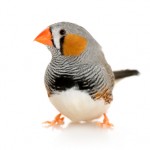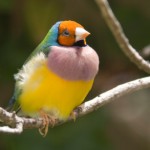Finch Biology
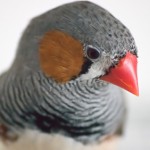
Male Zebra Finch
Finch biology is quite interesting especially when it comes to breeding or visually identifying females from males. Most people cannot tell the difference between a male from a female, no matter what type of bird it is. However, once you familiarize yourself with finches, identifying the female from male can be quite fun.
Generally, male finches have bright red beaks and female finches have orange beaks. Male feathers are more vivid in color whereas the females are duller or appear lighter in contrast to the male’s very vivid coloring. The males are the singers in the group and also use their song for courtship. At times they can often be heard practicing their number. Females do not possess the ability to sing but they often issue a warning or clicking sound when need be.
There are other ways to determine the sex of finches according to their type. For instance, male Zebra finches have bright red / dark orange beak, black breast bar, and orange cheeks. The females have orange beaks, and lack the color of the males except for the black feather on the chest area.
Some Zebra finches are completely white and can only be identified as male or female by the color of their beak. Their plain coloring is a result of a recessive mutation.
When it comes to Gouldian finches, you can identify them by looking at their beaks, the color of their breasts, or their overall coloring. Generally females are dull-colored in contrast to the males. In purple-breasted Gouldian finches, the females have a lighter shade of purple feathers on their breasts where as the males’ purple is more vivid and rich.
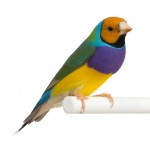
Male Gouldian Finch
Green singers, another type of finch, can be identified by their overall color. The males are brighter with more green especially in the chest area. The male green singers sing a lot. Overall, females look less green in contrast to the males. Females also have black spots around their neck making it look like a necklace.
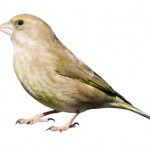
Female Green Finch
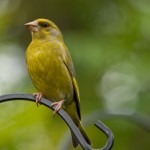
Male Green Finch
Other less common types of finches such as, the African Red Heads are easy to identify. Males are red-headed while females aren’t. However, finch biology can get difficult because other finches are very hard to identify, which may make breeding difficult. Finches like Orange Cheek Waxbills and Java Rice are hard to identify. Finches such as Society Finches, Spice Finches, Tri-Color Nuns, Lavender, and St. Helena Waxbills are quite impossible to visually determine between male or female. In this case you may consider visiting your avian veterinarian to aid you in identifying them. This is extremely important if you want to breed because you might be pairing birds that are two females or males if you don’t seek a veterinarian’s or other breeder’s advice.
Bear in mind, that in the finch world, the males are the best singers. You can observe who is male and female by observing your birds and taking note of those who have vocal prowess from those who don’t. You may identify them by putting tags and researching more about their types.
Finches that are easy to identify are the ones earlier mentioned: Zebra finches, Gouldian finches and green singing finches.

